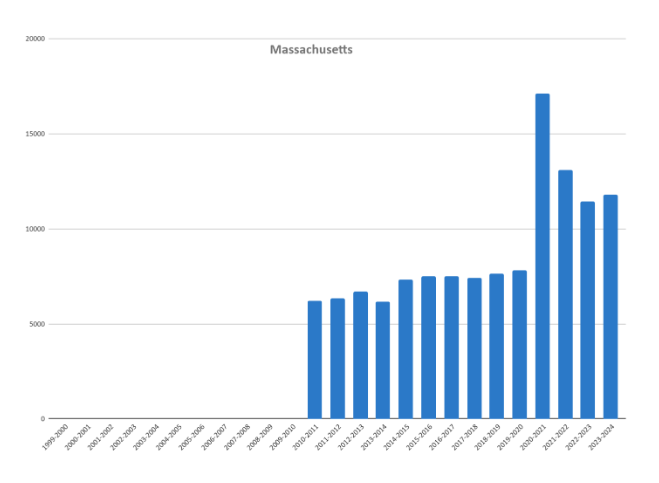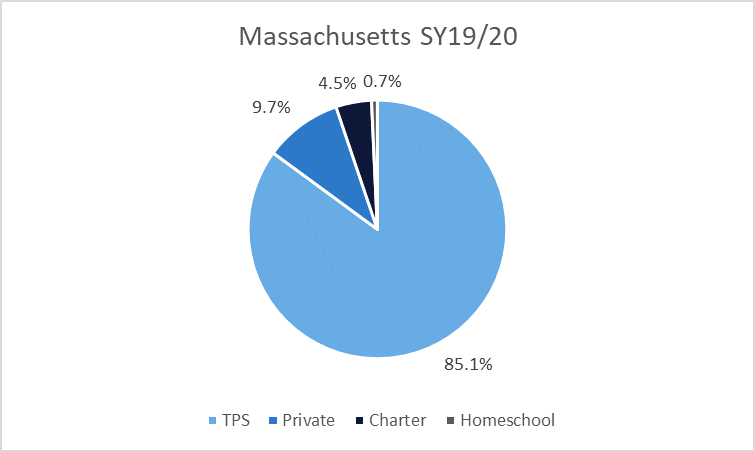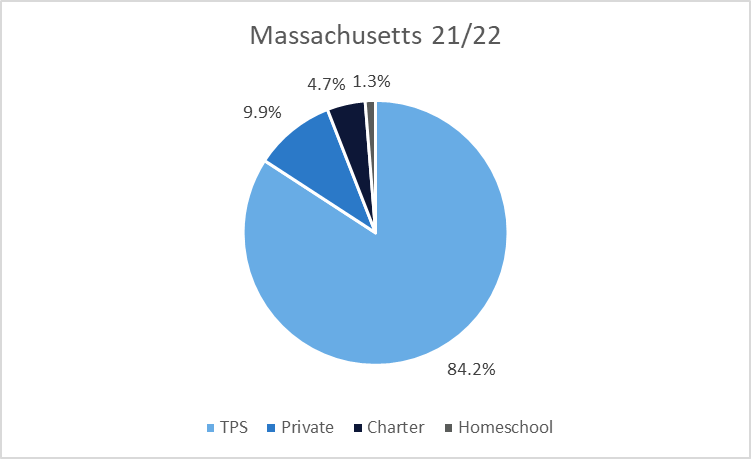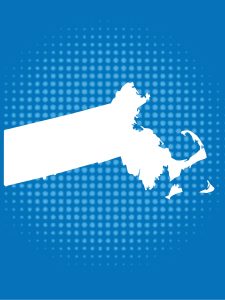Massachusetts is one of the only states in the nation where the homeschool policy is determined by the local school board.
History
Located in the northeastern region of the United States, Massachusetts legalized homeschooling in 1987 and updated the statute in 1997. Interestingly, Horace Mann, credited with being the “father of American public education,” homeschooled his own children in Massachusetts.
Regulation
Massachusetts has one option for homeschooling, and homeschool families are governed by a school committee in their area that sets local policies. Each district approves and provides homeschool guidance to families with children between the ages of 6 and 16. The state directs families to their local district for more information. Massachusetts is the only state in the nation with this sort of variable policy. No formal attendance requirements are listed on the state website; perhaps districts have different policies. Homeschools must provide instruction in certain subjects, in duration, and on pace with the local district. For example, according to the state Department of Education, “instruction in all the studies required by law equals in thoroughness and efficiency, and in the progress made therein, that in the public schools in the same town.”
The state requires parents to notify their local district in writing of their intent to homeschool. Districts may review the homeschool plan, proposed materials, curriculum, and methods of instruction. There are no minimum parent education requirements, record keeping, or regular testing requirements, however, the superintendent or school committee may require periodic standardized testing to assess student progress. Although district policies may serve as de facto regulation of homeschooling, other states regulate more explicitly.
Massachusetts does not provide access to public school offerings, such as sports, courses, or extracurriculars for nonpublic school students, including homeschooled students. Districts may make these decisions locally. It does appear that, under Massachusetts law, homeschooled students can access special education services.
State Data
Massachusetts provides annual homeschool participation data and detailed district/town-level counts too. Data is available from 2010 and onwards. In 2010, districts reported approximately 6,000 homeschooled students in Massachusetts. By 2019, that number reached 7,800. At the height of the pandemic, over 17,000 students were homeschooled.

The information provided by the U.S. Census tells a similar story. In the spring of 2020, about 1.5% of families said they homeschooled in Massachusetts, well below the national average of 5.4%. By fall, 12.1% of families moved to homeschooling. Based on U.S. Census data, our calculations indicate that about 3.14% of K-12 students in Massachusetts were homeschooled during the 2022-23 school year, and 3.39% during the 2023-24 school year. Due to survey changes, the data from 2020 reflects the percentage of households, while the data from following years reflects the percentage of students.
Cross-Sector Comparison
During the 2019-20 academic year, 0.7% of Massachusetts’ K-12 students were homeschooled. Homeschool participation in the state was much lower than the 9.7% of students attending private schools. Charter school participation in Massachusetts was also lower than private school participation, at 4.5%. In 2021-22, 1.3% of Massachusetts’ K-12 students were homeschooled. Participation in other sectors remained steady at 9.9% for private school and 4.7% for charter school attendance.


School Choice Context
In addition to homeschooling, Massachusetts parents have a few educational choices available. These options include traditional public schools with inter- and intra-district choice, public charter and magnet schools, and virtual learning programs. Massachusetts has no private school choice funding options for any students in the state.
Commentary
The localized homeschool regulation or policy context is unique to Massachusetts and leaves families vulnerable because of the variability from district to district. However, it is unclear how much policies differ across districts. The state could improve transparency by reporting more information they collect from homeschool families. For example, reporting on homeschool participants’ ages or grades could improve understanding of homeschool participation trends in the state and the nation. Further, Massachusetts is one of a dozen states that restricts access to public schools’ educational offerings like sports, courses, and extracurriculars. Broadening access could improve the educational opportunities for all of the state’s students.

-
12.1% Families
Around 12.1% of families in Massachusetts homeschooled during the height of the pandemic (Fall 2020).
-
1987 Legalized
Homeschooling was legalized in 1987 in the state of Massachusetts.
-

-
More Information
12.1% Families
Around 12.1% of families in Massachusetts homeschooled during the height of the pandemic (Fall 2020).
1987 Legalized
Homeschooling was legalized in 1987 in the state of Massachusetts.

More Information
Last updated March 2025.